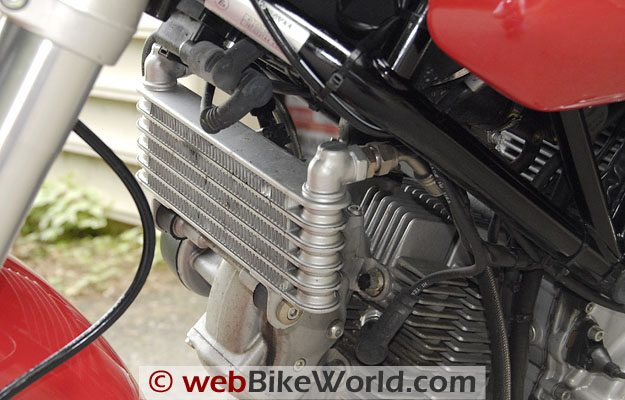This has been bothering me for a while.
The Griso/Stelvio/Breva oil cooler has the feed and return line at the bottom.

Unless there is a check valve in the circuit and the cooler is factory air bled, I reckoned air will be trapped in the upper rows of the oil cooler during normal operation causing a reduced cooling efficiency.
I spoke to several peoples, some thought I am no smarter than the Guzzi engineers, some said the oil pump will flush/push the air down and some said a check valve will hold the oil in the oil cooler and keep it fill up after engine shut down.

IMHO, the top feed/return orientation works better as it would hold the oil in the cooler after the engine shut down even without the presence of a check valve and allows any trapped air to be flushed out from the outlet located at the top row of the cooler.
What’s your view?
Phang
The Griso/Stelvio/Breva oil cooler has the feed and return line at the bottom.

Unless there is a check valve in the circuit and the cooler is factory air bled, I reckoned air will be trapped in the upper rows of the oil cooler during normal operation causing a reduced cooling efficiency.
I spoke to several peoples, some thought I am no smarter than the Guzzi engineers, some said the oil pump will flush/push the air down and some said a check valve will hold the oil in the oil cooler and keep it fill up after engine shut down.

IMHO, the top feed/return orientation works better as it would hold the oil in the cooler after the engine shut down even without the presence of a check valve and allows any trapped air to be flushed out from the outlet located at the top row of the cooler.
What’s your view?
Phang
